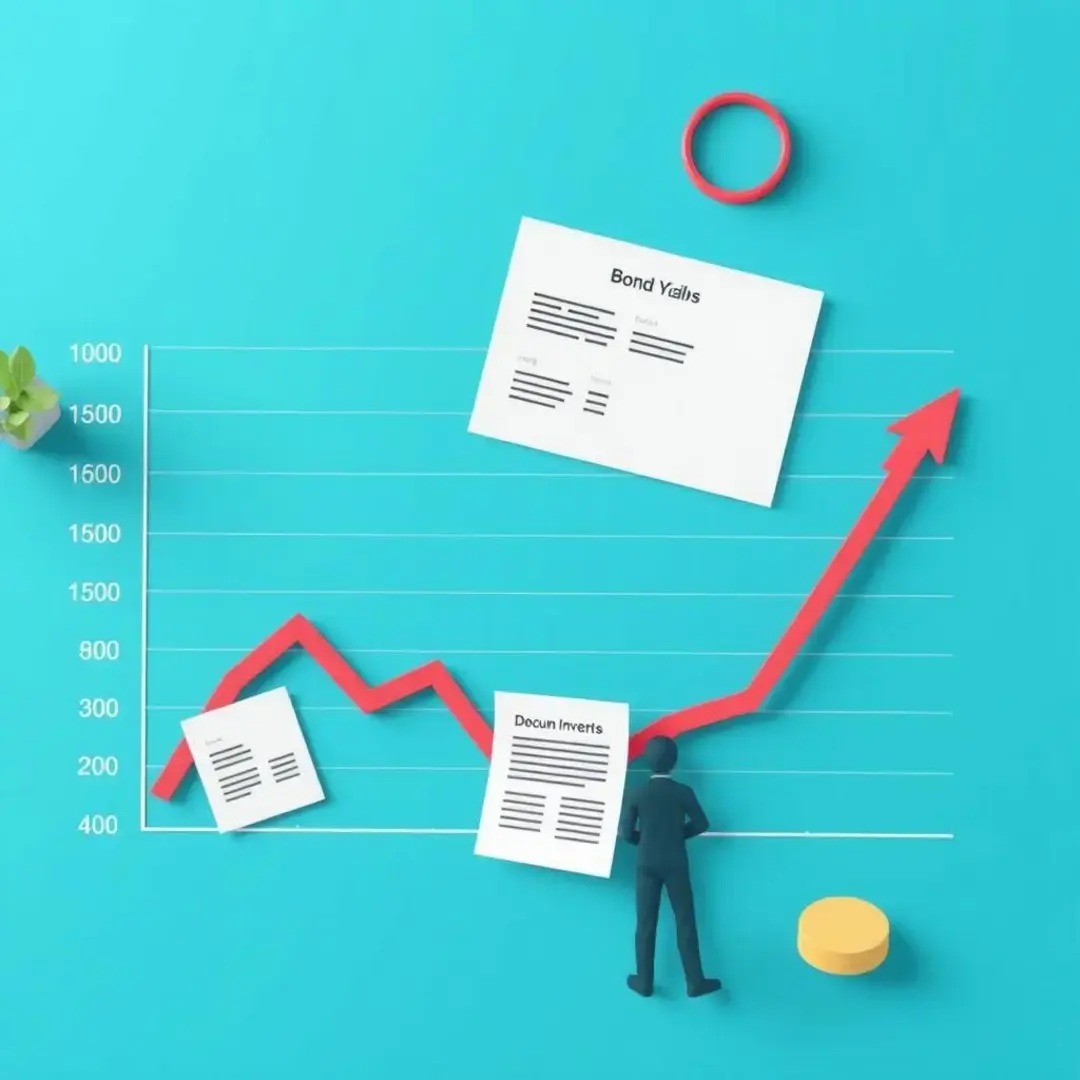Fixed-Income Securities: Bonds and Debentures
Understanding Bonds

Bond Basics
A bond is essentially a loan made by an investor to a borrower, typically corporate or governmental. When you purchase a bond, you are lending your money to the issuer, who promises to pay back the face value of the bond at a specified future date, known as the maturity date. In addition to repaying the principal, the issuer pays periodic interest, also known as coupon payments. These characteristics make bonds a popular choice for investors seeking stable returns.
Bonds are defined by several key features including the coupon rate, which determines the interest payments made to the bondholder, and the maturity date, which is when the bond must be repaid. The bond’s face value is the amount paid back at maturity, while its issue price may differ based on current market conditions. Understanding these features can help investors gauge potential returns and risks associated with bonds.
Bonds can be issued by various entities, including corporations, municipalities, and the federal government. Each issuer has different levels of creditworthiness, which affects the risk and return profile of the bond. For instance, U.S. Treasury bonds are considered low-risk due to the government’s backing, while corporate bonds can vary widely in terms of risk depending on the issuer’s financial health.
Bond Valuation and Pricing
The value of a bond is largely determined by its present value, which reflects the time value of money. This involves discounting the bond’s future cash flows, including both coupon payments and the face value at maturity, back to their present value using a relevant discount rate. Market conditions, such as supply and demand dynamics, also play a significant role in how bonds are priced.
Yield to maturity (YTM) is a critical measure that helps investors understand the potential returns on a bond if it is held until maturity. YTM encompasses all future coupon payments and the difference between the purchase price and the face value at maturity. A higher YTM typically indicates a bond is more attractive, but it may also signal increased risk, particularly if the YTM exceeds prevailing interest rates.
Interest rate risk is the risk that changes in market interest rates will affect bond prices inversely; when interest rates rise, bond prices usually fall. This happens because new bonds issued will likely offer higher coupon rates, making existing bonds with lower rates less desirable. Investors must therefore assess their tolerance for interest rate fluctuations when investing in bonds.
Advanced Bond Concepts
Duration is a measure of a bond’s sensitivity to interest rate changes, quantifying how much a bond’s price will change with a change in interest rates. On the other hand, convexity provides a deeper understanding by assessing how the duration of a bond changes as interest rates fluctuate. Both metrics are essential for investors who manage interest rate risk in their fixed-income portfolios.
Some bonds come with embedded options, allowing issuers or investors certain rights, such as the right to convert bonds into stocks or to call (redeem) bonds before maturity. These features can significantly affect a bond’s value and risk profile. Understanding these options aids investors in making more informed decisions while assessing potential gains and risks associated with specific bonds.
Credit risk refers to the possibility that a bond issuer may not fulfill its financial obligations. Bond ratings, assigned by agencies like Moody’s and Standard & Poor’s, serve as indicators of credit risk, assessing the likelihood of default. Higher-rated bonds are generally considered safer but may offer lower yields compared to lower-rated, riskier bonds, leading investors to balance their risk and return expectations.
Exploring Debentures

Debenture Fundamentals
A debenture is a type of long-term security that is backed only by the creditworthiness of the issuer, rather than any specific collateral. These debt instruments are often used by companies to raise capital and may carry a fixed interest rate paid to investors. Due to their unsecured nature, debentures typically offer higher returns than secured bonds, compensating investors for the increased risk.
While both debentures and bonds are used to raise capital, they differ primarily in terms of security. Bonds are often secured by assets, while debentures rely solely on issuer credit. This distinction results in different risk profiles, with debentures generally higher in risk but potentially offering greater returns. Investors must understand these differences to make informed investment choices.
Debentures come in several forms, including convertible debentures, which can be converted into shares of stock at a later date, and subordinated debentures, which rank lower in claims to assets during liquidation. Other types include non-convertible and secured debentures, which may offer different risk-return profiles based on the issuer’s financial stability and market conditions.
Debenture Analysis
When evaluating debentures, investors must consider the creditworthiness of the issuer, the industry sector, and the macroeconomic environment. Conducting thorough credit analyses can help anticipate potential defaults and their impact on the investment. Additionally, reviewing financial statements and understanding cash flow conditions can provide valuable insights into issuer stability.
Debenture yields can vary significantly based on the issuer’s credit rating and current market conditions. Investors should ensure they are obtaining an adequate return relative to the levels of risk, often comparing yields to similar fixed-income securities. Researching historical performance and trends can also illuminate potential future returns and risks.
Debentures may include covenants, which are formal agreements that impose certain restrictions or obligations on the issuer to protect investors. Such covenants can help mitigate risk by ensuring that the issuer maintains certain financial ratios or refrains from taking on additional debt beyond a specified limit. Analyzing these covenants can provide insight into the safety and soundness of the investment.
Advanced Debenture Topics
Subordinated debentures are those that have a lower claim on assets in the event of liquidation compared to senior debt instruments. As a result, they usually offer higher interest rates to compensate for the increased risk. Investors need to be cautious with such instruments, as they stand to lose their entire investment in case of the issuing company’s bankruptcy.
Convertible debentures offer investors the option to convert their debt into equity at a predetermined conversion rate. This feature can be appealing if the company performs well and stock prices rise. Understanding the valuation of convertible debentures requires investors to assess both the bond characteristics and the underlying stock potential, striking a balance between fixed-income returns and equity exposure.
Debentures play a crucial role in corporate finance by providing companies with flexible borrowing options that don’t require collateral. Companies can use proceeds from debenture issuances to fund operational expansions, research and development, or debt refinancing. Investors should consider the strategic significance of a company’s debenture issuance to make informed decisions about long-term investments.
Comparing Bonds and Debentures: A Detailed Analysis

Key Differences and Similarities
The creditworthiness of bond and debenture issuers is paramount in determining the relative risk associated with each investment. Bonds backed by government entities often come with lower risk compared to corporate debentures, which are influenced by the issuer’s financial health. Assessing the credit quality of issuers assists investors in evaluating potential default risks.
While bonds are often secured by collateral, debentures are typically unsecured, relying on the issuer’s credit profile for safety. This fundamental difference creates varied risk scenarios for investors. It is vital for investors to carefully examine the underlying security structure when deciding between these fixed-income securities.
Liquidity can vary widely between bonds and debentures, influenced by the issuer’s size and market demand. Generally, government bonds tend to exhibit higher liquidity as they are more widely traded compared to corporate debentures. Understanding the liquidity characteristics helps investors plan their exit strategies and assess their need for immediate access to cash.
Choosing Between Bonds and Debentures
When choosing between bonds and debentures, investors should carefully assess their individual investment objectives and risk tolerance. Bonds might align better with conservative investors seeking stable income, while debentures may appeal to those willing to accept higher risk for potentially greater returns. Aligning investments with personal financial goals is crucial for achieving long-term success.
Market conditions and future interest rate expectations play a critical role in deciding whether to invest in bonds or debentures. In a rising interest rate environment, bonds may underperform, while debentures could provide opportunities for higher yields. Awareness of macroeconomic factors, such as inflation and central bank policies, will help investors navigate these choices effectively.
Both bonds and debentures can serve as essential components in a diversified investment portfolio. By mixing these fixed-income securities with equities and other asset classes, investors can achieve greater risk management and potential returns. It is important to evaluate the correlations between various fixed-income instruments to craft a well-balanced investment strategy.
Fixed-Income Portfolio Management Strategies

Building a Diversified Portfolio
Effective asset allocation is vital for managing risk and optimizing returns within a fixed-income portfolio. Investors should consider their overall financial situation, investment horizon, and income needs when determining the appropriate allocation to bonds and debentures. A well-allocated portfolio can withstand market volatility and changes in interest rates, ensuring long-term financial stability.
Investors must actively manage both interest rate and credit risk within their fixed-income portfolios. Strategies such as diversifying across various bond classes, using derivatives for hedging, and actively monitoring issuer credit ratings can enhance risk management. Staying informed about changing market conditions is also crucial to adapt strategies as needed.
Bonds and debentures each play distinct roles in constructing a resilient investment portfolio. Bonds provide stability and income, often acting as a safety net during turbulent market periods, while debentures may offer higher potential returns at increased risk. By understanding these roles, investors can better position themselves to meet their specific financial goals.
Advanced Portfolio Management Techniques
Interest rate forecasting is a common practice in portfolio management, influencing decisions about bond and debenture allocations. However, this method carries inherent limitations and often involves significant uncertainty due to the complex interplay of economic variables. Investors should rely on robust market analysis and maintain flexibility to adapt to unforeseen circumstances.
Bond laddering involves investing in bonds of varying maturities to manage interest rate risk and ensure liquidity. By staggering maturing bonds, investors can capitalize on changing interest rates over time. Conversely, a barbell strategy focuses on investing in short- and long-term bonds while avoiding intermediate maturities, allowing for both liquidity and higher yield potential from long-duration securities.
Lastly, investors must decide between active and passive fixed-income strategies depending on their investment philosophy and market outlook. Active management seeks to capitalize on market inefficiencies, necessitating deeper analysis and frequent trading, while passive strategies adhere to a buy-and-hold approach, often relying on index tracking. Each approach has its merits, and the choice ultimately depends on individual investor goals and market perspectives.












